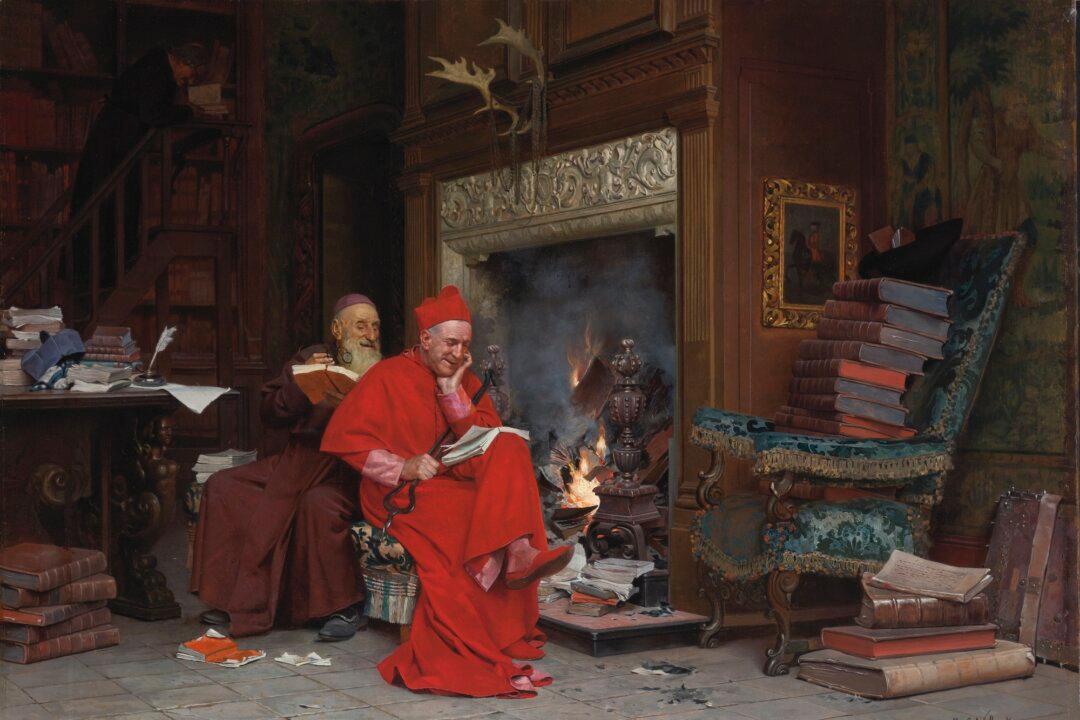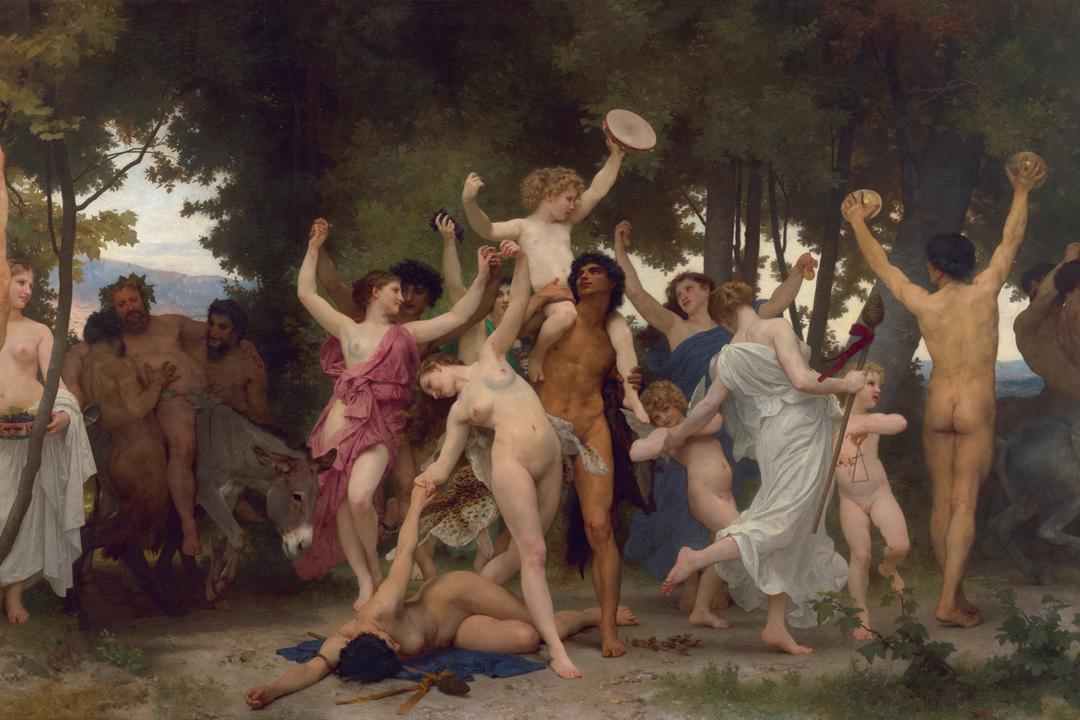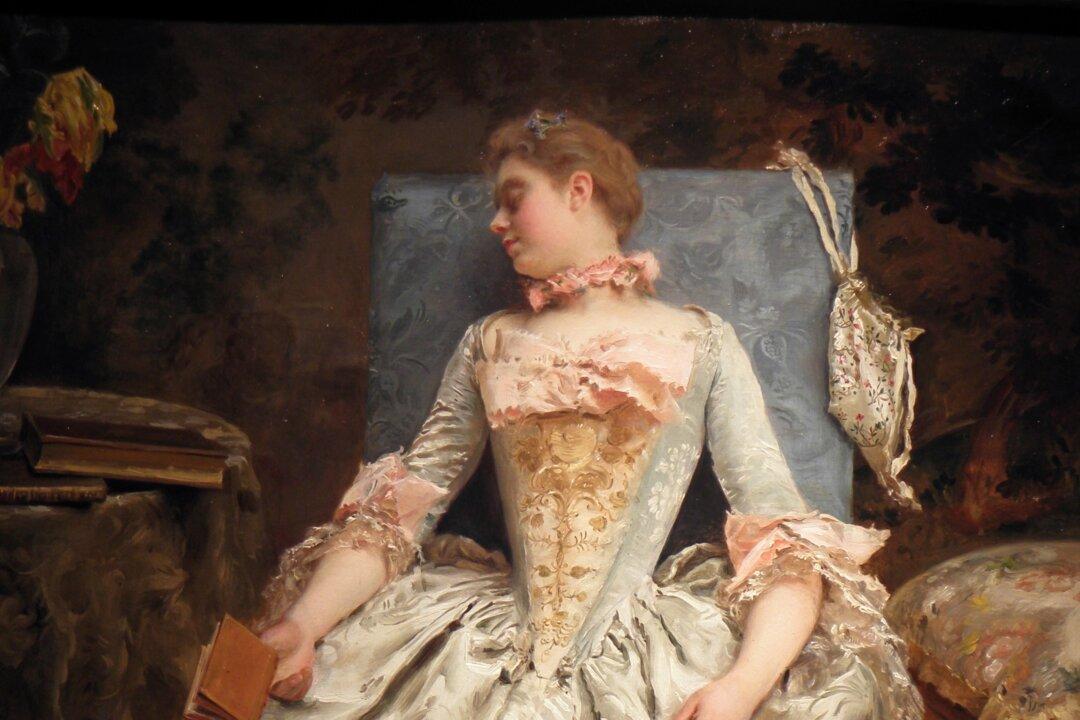Apart from the artists who were given varying degrees of administrative power in the French Academies, there were many artists who dedicated their time solely to painting and became famous for their work without becoming involved in leadership roles.
The painter Jehan Georges Vibert (1840–1902) must be mentioned for his famous works that spoofed the clergy. Misinterpreted as silly anecdotal paintings for most of the 20th century, his works were truly an expression of freedom of speech as in many places such works were considered blasphemous. One must not forget that poking fun at the clergy would have been a serious criminal offence not that long before.
One very amusing example of his work is “The Committee on Moral Books.” This painting shows two clergymen reviewing a large stack of questionable books to deem if they are suitable for the public. The two men of the cloth sit reading and in a state of considerable merriment and laughter, undoubtedly evoked by the books’ contents, toss them into the fire. This painting is intended to point out hypocrisy in the clergy, and although humorous to the viewer, the painting is actually addressing the serious matter of censorship.
Vibert was not an artist who took shortcuts and in many of his paintings he would choose what would appear to be the most difficult choices. From extravagant wallpaper to Persian carpets, to highly articulated clothing and jewelry and opulent settings, Vibert was a technical master. However, in Vibert’s clergy paintings he was not only showing off his skill with the brush, but also denoting the rich and luxurious settings the leaders of the church enjoyed while so many others endured poverty.






